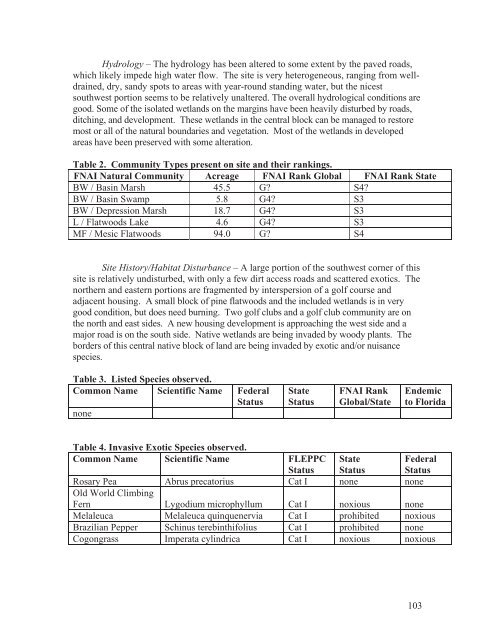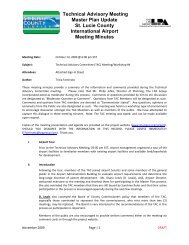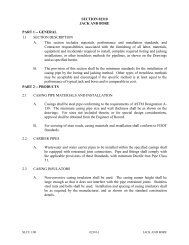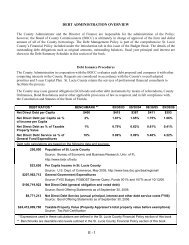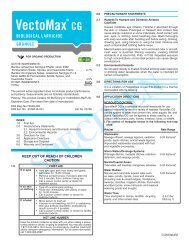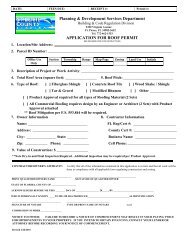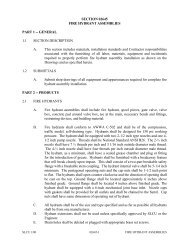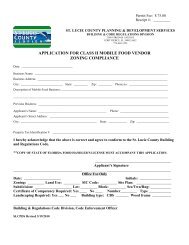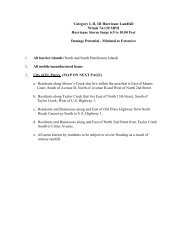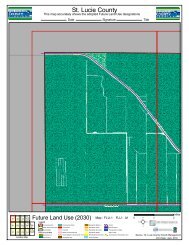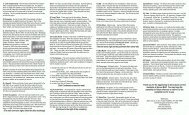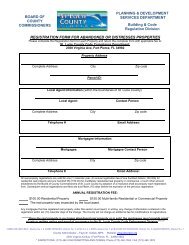Native Habitat Inventory Final Report 2004 - St. Lucie County
Native Habitat Inventory Final Report 2004 - St. Lucie County
Native Habitat Inventory Final Report 2004 - St. Lucie County
Create successful ePaper yourself
Turn your PDF publications into a flip-book with our unique Google optimized e-Paper software.
Hydrology – The hydrology has been altered to some extent by the paved roads,<br />
which likely impede high water flow. The site is very heterogeneous, ranging from welldrained,<br />
dry, sandy spots to areas with year-round standing water, but the nicest<br />
southwest portion seems to be relatively unaltered. The overall hydrological conditions are<br />
good. Some of the isolated wetlands on the margins have been heavily disturbed by roads,<br />
ditching, and development. These wetlands in the central block can be managed to restore<br />
most or all of the natural boundaries and vegetation. Most of the wetlands in developed<br />
areas have been preserved with some alteration.<br />
Table 2. Community Types present on site and their rankings.<br />
FNAI Natural Community Acreage FNAI Rank Global FNAI Rank <strong>St</strong>ate<br />
BW / Basin Marsh 45.5 G? S4?<br />
BW / Basin Swamp 5.8 G4? S3<br />
BW / Depression Marsh 18.7 G4? S3<br />
L / Flatwoods Lake 4.6 G4? S3<br />
MF / Mesic Flatwoods 94.0 G? S4<br />
Site History/<strong>Habitat</strong> Disturbance – A large portion of the southwest corner of this<br />
site is relatively undisturbed, with only a few dirt access roads and scattered exotics. The<br />
northern and eastern portions are fragmented by interspersion of a golf course and<br />
adjacent housing. A small block of pine flatwoods and the included wetlands is in very<br />
good condition, but does need burning. Two golf clubs and a golf club community are on<br />
the north and east sides. A new housing development is approaching the west side and a<br />
major road is on the south side. <strong>Native</strong> wetlands are being invaded by woody plants. The<br />
borders of this central native block of land are being invaded by exotic and/or nuisance<br />
species.<br />
Table 3. Listed Species observed.<br />
Common Name Scientific Name Federal<br />
<strong>St</strong>atus<br />
none<br />
<strong>St</strong>ate<br />
<strong>St</strong>atus<br />
FNAI Rank<br />
Global/<strong>St</strong>ate<br />
Endemic<br />
to Florida<br />
Table 4. Invasive Exotic Species observed.<br />
Common Name Scientific Name FLEPPC<br />
<strong>St</strong>atus<br />
<strong>St</strong>ate<br />
<strong>St</strong>atus<br />
Federal<br />
<strong>St</strong>atus<br />
Rosary Pea Abrus precatorius Cat I none none<br />
Old World Climbing<br />
Fern Lygodium microphyllum Cat I noxious none<br />
Melaleuca Melaleuca quinquenervia Cat I prohibited noxious<br />
Brazilian Pepper Schinus terebinthifolius Cat I prohibited none<br />
Cogongrass Imperata cylindrica Cat I noxious noxious<br />
103


